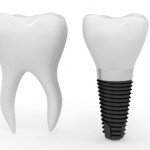
The aim of this review was to assess the effectiveness of short (<10 mm) implants supporting single crowns in the posterior region and its potential risk factors.
A wide range of databases were searched (PubMed-Medline, Web of Science, Cochrane Library, Proquest- Dissertations and Thesis, Lilacs, Ebsco-Dentistry and Oral Sciences Source, Scirus, Embase, Scopus and Journal Ovid.) In addition a range of relevant journals were searched. No date or language restrictions were applied
Randomized controlled clinical trials (RCTs), controlled clinical trials (CCTs), prospective cohort studies and case series of short (<10 mm) implants supporting single crowns in non-augmented, healed bone with a minimum of 10 implants per group and at least a 1-year post-loading follow-up were considered.
A standard data abstractions form was used to collect a number of outcome measures: – Implant failure proportion (FP) ; Biological failure proportion (BFP); Radiographic marginal bone loss (MBL); Prosthetic failure proportion (PFP); Risk factors associated to implant and prosthesis failure (RkF): A study quality tool was developed for the review and used to score selected studies. Meta-analysis was conducted for the outcomes FP, BFP, PFP and MBL using a random-effects model.
- 21 studies were included that described 16 prospective parallel-designed studies (10 cohorts and six case series).
- The longest follow up period was 120 months.
- Meta-analysis for the outcomes
- Implant failure proportion (FP):- 5.9% (95% CI: 3.7–9.2%)
- Biological failure proportion (BFP):- 3.8% (95% CI: 1.9–7.4%)
- Radiographic marginal bone loss (MBL):- 0.835 mm (95% CI: 0.545– 1.125 mm)
- Prosthetic failure proportion (PFP):- 2.8% (95% CI: 1.4–5.7%)
The authors concluded
Within the limitations of the present systematic review with meta-analysis, it is suggested that single crowns supported by short implants are an acceptable and predictable option in the short- and long-term treatment of the atrophic jaws.
Comment
Unfortunately this review did not identify any RCTs or CCTs to address this question. While a quality assessment of the studies has been conducted with a tool that has not been validated a point raised buy the authors in the discussion. As one would anticipate the cohort designs to be methodologically more robust than case series it would seem preferable to have restricted the meta-analysis to the cohort studies rather than include both. However, this review does provide a significant amount of detailed description of the included studies which is helpful. An earlier systematic review of short implants by Sun et al from 2011 was appraised in an ADA-EBD summary earlier this year (Dental Elf 5th June 2013). That review also failed to find any RCTs and did not consider a meta-analysis appropriate due to the low quality and heterogeneity of the studies available. Previously (Dental Elf -13th October 2011) and (Dental Elf 18th July 2011 ) we have looked at reviews that have discussed the performance of shorter dental implants.
Links
Mezzomo LA, Miller R, Triches D, Alonso F, Shinkai RS. Meta-analysis of single crowns supported by short (<10 mm) implants in the posterior region. J Clin Periodontol. 2013 Oct 6. doi: 10.1111/jcpe.12180. [Epub ahead of print] PubMed PMID: 24266703.
Dental Elf – 5th June 2013 – ADA-EBD summary on short dental implants
Dental Elf – 18th July 2011 – Shorter dental implants have higher failure rates
